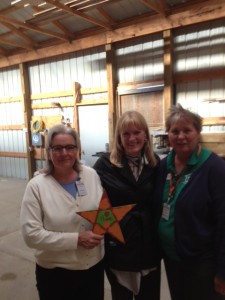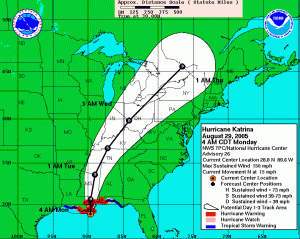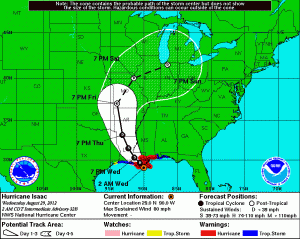In late August and early September 2011 Hurricane Irene and Tropical Storm Lee hit the US east coast bringing strong winds and heavy rains. The storm systems came on back-to-back weekends (Irene on August 27-29 and Lee on September 3-5), causing many areas to be overrun with flooding. This was especially true in the northeast as Lee sat over the region from eastern Pennsylvania to New Jersey and Upstate New York dumping over a foot of rain on an already saturated area. Some rivers reached 17+ feet above flood level.
One year later, we look back on these disasters and remember those who were affected. It has been a long road with bright spots and bumps along the way. As a way of remembering these people and those who work on their behalf we would like to share with you updates from our affiliates who have being helping in the response.
New Jersey – Lutheran Social Ministries of New Jersey
In the aftermath of Hurricanes Irene and Lee, Lutheran Social Ministries of New Jersey – with a $30,000 grant from Lutheran Disaster Response – positioned a temporary disaster recovery coordinator to work primarily in northern New Jersey. Kathryn “Trink” Schwartz served out of Morris County from November 2011 to May 2012. One of Trink’s major roles was to bring county leaders together to create a functioning long-term recovery committee. The Morris County Disaster Recovery Committee has been active since the spring and continues to care for ongoing unmet needs in the area.
With additional support from LDR, LSM/NJ created 100 flood buckets. During a fall 2011 youth event, middle-school students from the New Jersey Synod assembled the buckets, which are now strategically placed in churches throughout the state for use in future disasters. In addition $16,000 in LDR unmet needs grants have been distributed.
Upstate New York – Upstate New York Synod
During the latter part of 2011 and continuing through 2012, the Lutheran Disaster Response team for the Upstate New York Synod had the opportunity to experience, first hand, how their Synod comes together when people are in need. Irene and Lee struck 33 counties within New York State. These areas have been declared federal disaster areas. Congregations and individuals across the Synod responded in many different ways. Congregations helped and still continue to assist by feeding, providing shelter and sending work teams to the affected areas. Over 200 flood buckets were assembled by various congregations in the Synod and were distributed to persons in the affected areas. The Synod’s LDR team sponsored long term recovery training for five communities across upstate New York in the fall of 2011.
The focus of the Synod has been the Schoharie County area. Mud and muck have been cleaned out of homes and businesses. Rebuilding has started and still continues. Through the collaborative efforts of many faith based organizations and Schoharie Area Long Term, Inc. (SALT) the needs of hundreds of individuals that were displaced by the disaster have been facilitated. National LDR provided $75,000 to support SALT and our local Leadership Team’s efforts in responding to initial needs and in the first year of long term recovery. Individuals and congregations across our Synod raised another $36,000 including a $5,000 challenge grant from Thrivent Financial for Lutherans. These dollars enabled SALT to purchase construction material to aid in the rebuilding of five homes in Schoharie County. Additionally, dollars were provided to two Lutheran congregations whose buildings were significantly damaged by the storms and supported several work teams from congregations including a spring break high school team organized through the collaborative efforts of Vanderkamp (www.vk.org/), an outdoor ministry in Cleveland, NY and King of Kings Lutheran Church in Liverpool, NY.
The work is far from done. Volunteers continue to be needed in the Schoharie County area as well as other locations in NY. Learn about volunteer opportunities through SALT at www.saltrecovery.org/.
Southeastern Pennsylvania – Liberty Lutheran Services
Liberty Lutheran Services’ Lutheran Disaster Response in eastern Pennsylvania program has been engaged in southeastern Pennsylvania, including the city of Philadelphia, since the event happened. Early on, they took leadership for the VOAD (Voluntary Organizations Active in Disaster) training teams in cleaning out houses safely. LDR-Eastern PA then organized groups, which included volunteers from Americorps, TzuChi, churches and individuals, to do the cleanouts. Once it came time to move to long term recovery, Liberty Lutheran Services helped form the Montgomery County Resource and Recovery Committee. LDR has been participating in case management, damage assessment, and repairs. Throughout the process the agency has helped scores of homeowners to clean out, rebuild, or simply come to peace with the flooding they experienced.
Northeastern Pennsylvania – Lutheran Congregational Services
10 of the 14 counties served by Lutheran Congregational Services in northeastern PA were declared Federal Disaster Areas following Hurricane Irene and Tropical Storm Lee. Over 100,000 people applied for FEMA assistance. Long Term Recovery Groups formed in Bradford, Susquehanna, Luzerne, Schuylkill, Wyoming and Berks Counties. Even now a year later some properties have not been touched and these groups are seeking volunteers to muck and gut alongside putting houses back together.
To offer your services contact: Dianne Fox, Volunteer Coordinator at dianne@lutherancongregationalservices.org or 610.428.4598.
—–
Gifts to ELCA Disaster Response allow the church to respond at home and globally in times of need. Donate now.
 This is Pastor Michael Stadie, Program Director for Lutheran Disaster Response (LDR).
This is Pastor Michael Stadie, Program Director for Lutheran Disaster Response (LDR).


